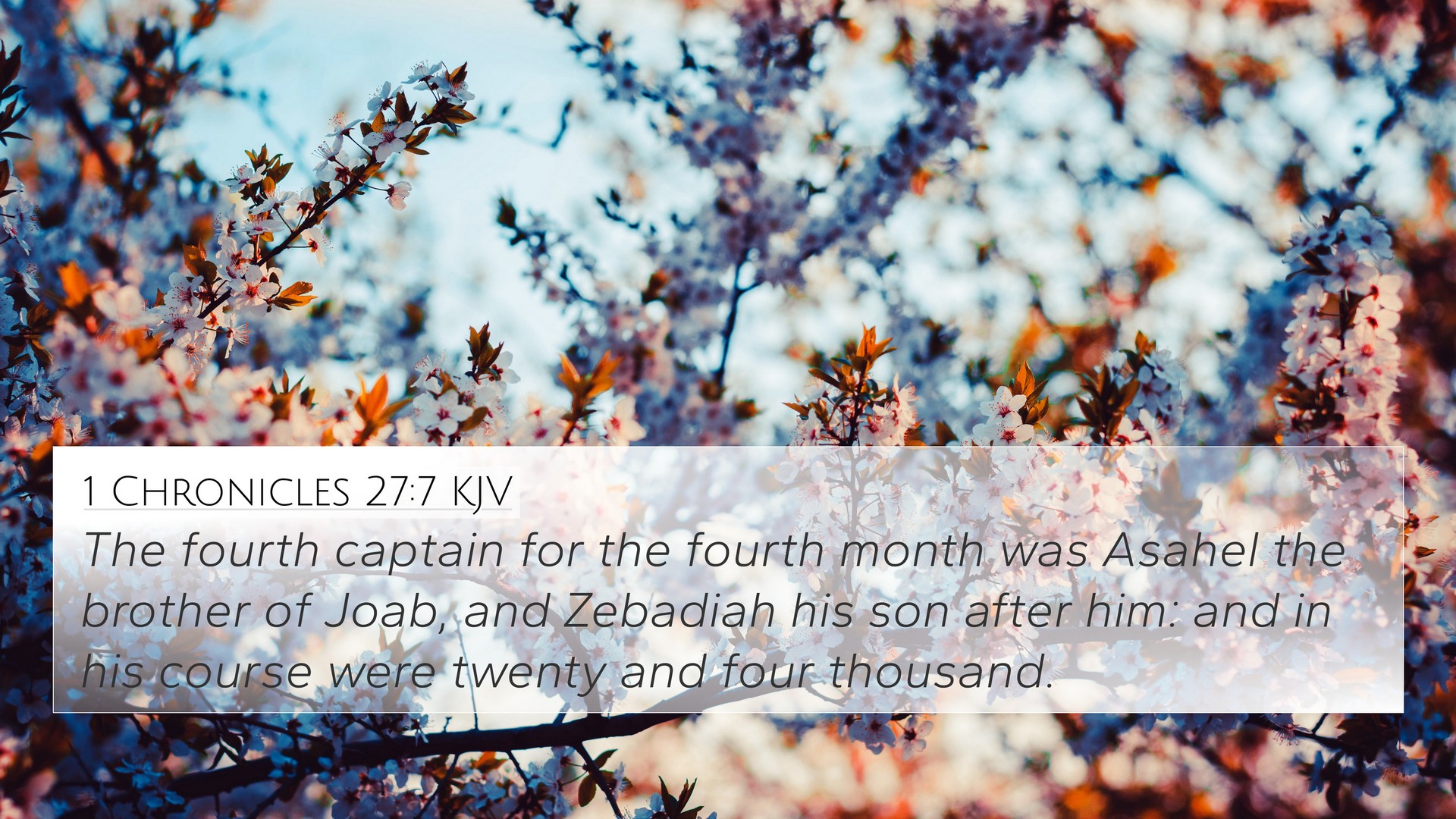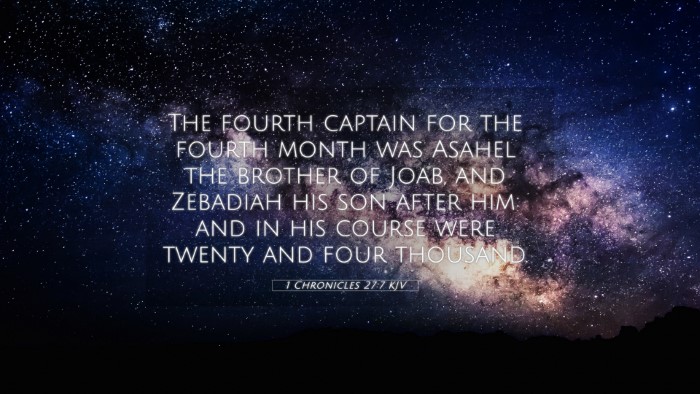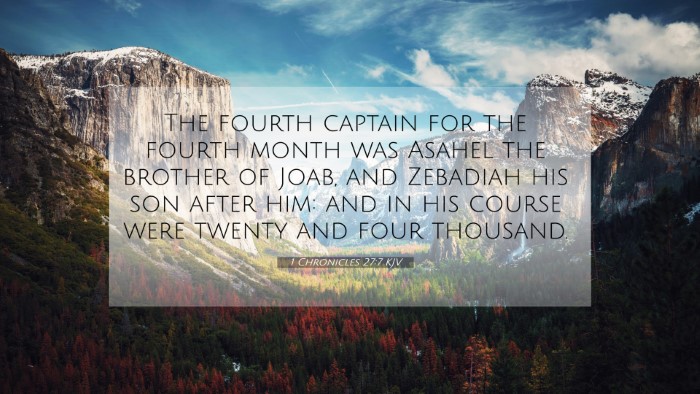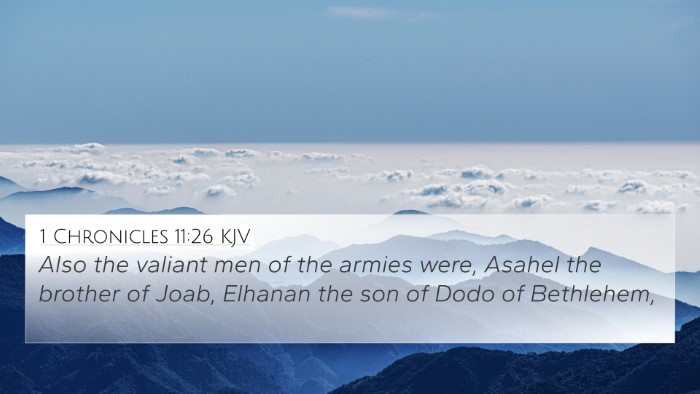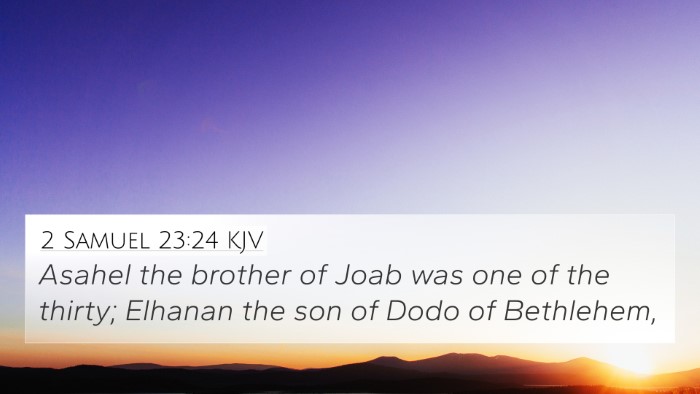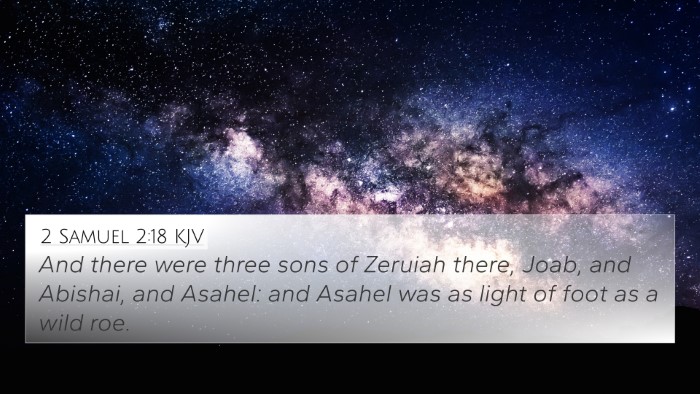Bible Verse Meaning: 1 Chronicles 27:7
1 Chronicles 27:7 states, "The seventh commander for the seventh month was Helez the Pelonite, of the descendants of Ephraim." This verse names one of the leaders who served in King David's army, emphasizing the organization and structure within the administration of Israel under David’s reign.
The significance of this verse lies in its reflection of David's leadership and the military organization he established. The appointment of leaders as commanders shows a systematic approach to governance and an effective method of overseeing military operations.
Insights from Public Domain Commentaries
-
Matthew Henry:
Henry comments on the order and discipline established by David. He notes that each month had its commander, illustrating the methodical nature of the military, and highlights that all tribes of Israel had representation in this structure, underscoring unity among the tribes.
-
Albert Barnes:
Barnes emphasizes the importance of the Pelonite, a member of a family or group that served in significant roles within David’s military. This representation points to how David utilized skilled individuals from various backgrounds, reflecting his capability in leadership and warfare.
-
Adam Clarke:
Clarke reflects on the genealogical aspect of the commanders, noting how their lineage is mentioned in conjunction with their roles. This practice not only provides cultural context but also establishes legitimacy and pride of the commanders within their respective tribes.
Thematic Connections
This verse can be linked to themes of leadership, organization, and unity among the people of Israel. The meticulous recording of each leader indicates the importance of accountability and structure in governance and military affairs.
Cross-References for Further Study
- 1 Chronicles 11:10: Discusses the might of David's men, showing the significance of leadership in battle.
- 2 Samuel 23:8-39: Lists David's mighty men, highlighting individual achievements and their role in Israel’s military.
- 1 Chronicles 12:24: Relates the number of warriors from various tribes, demonstrating unity.
- Exodus 18:21: Highlights the importance of appointing leaders among the people for effective governance.
- Numbers 1:3: Establishes an account of Israel’s warriors, showcasing the military readiness of the nation.
- 1 Samuel 14:52: Illustrates the continual striving in battles against the Philistines, reflecting the ongoing military challenges during David's reign.
- 1 Chronicles 28:1: Highlights David's assembly of leaders, again showing the role of organization.
Understanding the Verse in Context
1 Chronicles 27:7 fits within a broader narrative of how David established a strong, unified kingdom. The listing of commanders serves not just as historical documentation but as a teaching tool for understanding leadership roles, responsibility, and national identity.
By linking this verse with others, one can see how biblical narratives interweave themes of leadership, unity, and divine order. Such analyses can enhance one’s understanding of scriptural contexts and the development of themes throughout the Bible.
Conclusion
The verse from 1 Chronicles 27:7 serves as a vital example of military organization in biblical history, reflecting David’s leadership skills and the underlying unity of Israel's tribes. It invites readers to explore the connections between Old Testament texts and their implications for understanding biblical governance, accountability, and heritage.
